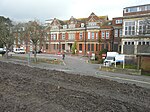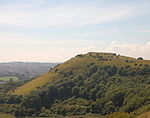Folkestone Academy
2007 establishments in EnglandAcademies in KentEducational institutions established in 2007FolkestoneKent building and structure stubs ... and 3 more
Secondary schools in KentSouth East England school stubsUse British English from October 2017
Folkestone Academy is a mixed secondary school and sixth form with academy status in Folkestone, Kent, England that was established in September 2007. In April 2017, the school became a part of Turner Schools
Excerpt from the Wikipedia article Folkestone Academy (License: CC BY-SA 3.0, Authors).Folkestone Academy
Academy Lane, Folkestone and Hythe District Park Farm
Geographical coordinates (GPS) Address External links Nearby Places Show on map
Geographical coordinates (GPS)
| Latitude | Longitude |
|---|---|
| N 51.0923 ° | E 1.167 ° |
Address
Folkestone Academy
Academy Lane
CT19 5FP Folkestone and Hythe District, Park Farm
England, United Kingdom
Open on Google Maps







